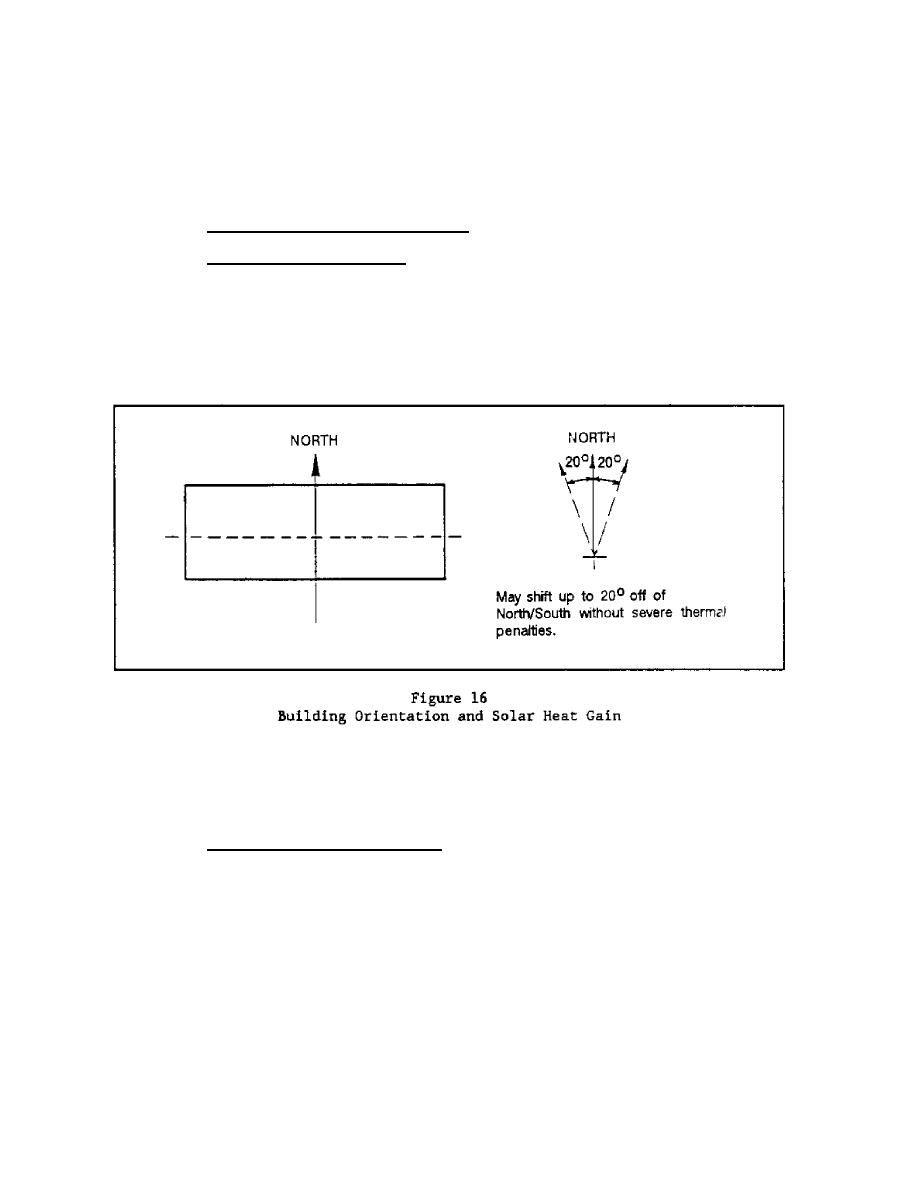
MIL-HDBK-1011/2
possible to somewhat compensate for poor orientation to the wind by detailed
design of the facade and windows, and for poor building shape by the
arrangement of the building's interior plan.
4.4.2
Optimal Shape and Orientation
4.4.2.1
Thermal Considerations. In nearly all climates, the optimum shape
for solar control is roughly elongated along the east-west axis. See Figure
16. To minimize solar gains, elongate the north and south walls creating an
east-west axis. East and west exposures (walls and especially glazing) should
be minimized since they are difficult to shade and receive longer periods of
direct radiation. South and north exposures are less difficult to shade,
especially with roof overhangs. A variation of 15 to 20 degrees from true
south has little effect on the thermal performance of small buildings.
The optimal elongation depends on climatic conditions. In severe
hot-humid climates, extreme elongation (2.5 : 1 ratio) creates a narrow
building with a large wind-exposed face for ease of ventilation. In temperate
climates, more freedom in building shape and orientation is allowable.
4.4.2.2
Ventilation Considerations. For an elongated building without
openings, the largest pressure differences (which drive cross-ventilation)
occur when the building is perpendicular to the prevailing wind. However,
this orientation does not necessarily result in the best average interior
velocity rates or airflow distribution. For bodily cooling, the goal is to
achieve the highest average room velocity in which air movement occurs in all
occupied parts of the room.
When windows are in adjacent walls, the optimum ventilation occurs
with the long building face perpendicular to the wind, but a shift of 20 to 30
degrees from perpendicular will not seriously impair the building's interior
ventilation. This allows a range of orientations for resolving possible
conflicts with the optimum solar orientation.
29



 Previous Page
Previous Page
